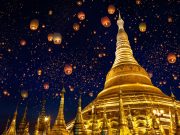The travel industry in 2025 stands at a juncture of advancement and accountability. As global tourism rebounds to pre-pandemic levels, travelers and industry stakeholders alike are steering a landscape transformed by environmental priorities, cutting-edge technologies, and evolving traveler demands.
## Eco-Friendly and Environmentally Aware Travel
The imperative for sustainability has become a cornerstone of modern travel. By 2025, the tourism sector is projected to generate 6.5 billion metric tons of carbon emissions, necessitating urgent action. Destinations like Costa Rica and Bhutan are spearheading this charge, with the latter maintaining its status as the world’s only emissions-reversing country through rigorous tourism limits.
Restorative travel models, such as New Zealand’s Māori-led eco-tours, are building popularity. These programs reflect a broader shift: 73% of travelers now favor brands with strong environmental policies.
## Customization and Bespoke Experiences
Premium tourism in 2025 is synonymous with ultra-tailoring. Discerning travelers seek profound experiences tailored to their unique interests. Operators like LuxGroup emphasize “ethical luxury,” blending luxury with cultural immersion.
Artificial Intelligence is reshaping trip planning, enabling flexible agendas that adjust to real-time preferences. This trend aligns with findings that 64% of luxury travelers prefer customized deals over standardized options.
## Avoiding Overtourism Through Creativity
Overtourism remains a pressing issue, prompting travelers to seek “alternative locations” and shoulder-season visits. Cities like Ljubljana are alleviating congestion through automobile-prohibited districts and bike pathways.
Authorities are intervening; Amsterdam and Majorca have enacted guest ceilings and behavior guidelines to maintain local ecosystems.
## Technology’s Role in Frictionless Travel
AI’s influence spreads beyond personalization into operational efficiency. Virtual assistants handle 24/7 customer inquiries, while predictive analytics optimize flight schedules and hotel pricing. Virtual reality previews allow travelers to “test” destinations before booking.
Applications like Seven Corners optimize trip management, offering instant notifications on weather, crowds, and transportation delays. Blockchain technology enhances clarity in carbon offset programs.
## Longer Stays and Local Integration
The era of whirlwind tours is declining. Affluent visitors are commonly opting for two-week stays to strengthen cultural connections. Families are increasingly embracing “work trips,” blending remote work with prolonged visits.
## Experience-Based Travel and Unique Adventures
“Concert traveling” has exploded, with fans crisscrossing globes for major events. Stargazing travel—exemplified by stargazing in Chile’s Atacama Desert—reflects expanding appeal in cosmic occurrences.
## Health and Tech-Free Breaks
Wellness tourism is evolving beyond wellness centers to encompass holistic healing. Tech-free escapes combine mindfulness with farm-fresh meals, aligning with a 95% increase in demand for self-care-centered itineraries.
## Economic Strategies and Value-Conscious Travel
Travelers are leveraging membership benefits and bundled offers to maximize value. Banking incentives are being carefully utilized for enhancements, reflecting a shift toward “smart luxury”.
## Conclusion
The travel landscape of 2025 is defined by its duality: a yearning for exploration moderated by principled stewardship. As destinations harmonize advancement with conservation, stakeholders can ensure tourism remains a bridge—not a obstacle—to a more integrated and conscientious world.

















